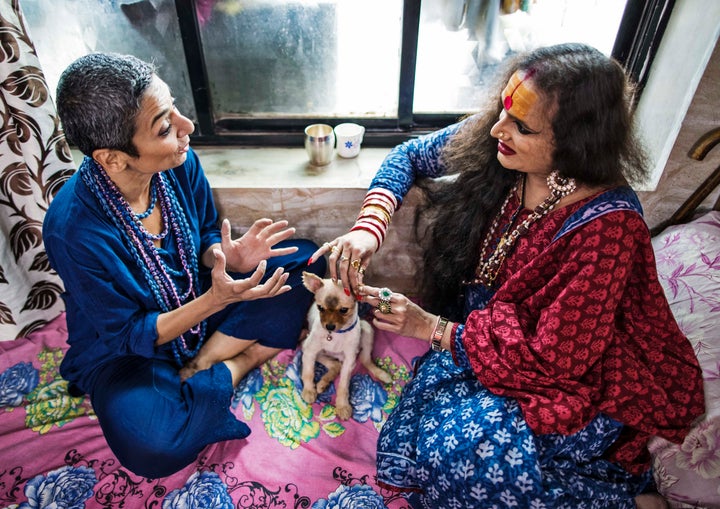Fluid understanding of gender can be seen in many cultures around the world. In Native American cultures, people who do not fit the definitive understanding of female or male are seen as bridges between humans and the greater spirit. In Hindu scripture, hijra or kinner or third gender were seen as demi-gods and historically played important roles in royal palaces as entrusted advisors. Even in the Quran, there is an acknowledgment of gender ambiguity as part of God’s creation.
Over time, historical relationships around gender fluidity diminished, leaving a more rigid understanding of male and female. During the British colonization of India (which then included Pakistan and Bangladesh), rulers suppressed the fluidity of gender understanding and outlawed all such practices in their territories. But as with everything that becomes illegal, the third gender community went underground.
“When the Indian Supreme Court acknowledged that gender is a non-binary form of identity that goes beyond male and female, the victory came as a nice surprise to many.”
In India, there is no rigid understanding of what it means to be third gender, nor is there a rigid definition around those who self-identify as third gender. The community is casually referred to as the hijra and traditionally referred to as kinner. And the community is not limited to just people who want gender confirmation operations ― in fact, some don’t want that at all. While some gender confirmation operations do happen, surgeries are usually limited to breast augmentation or genital augmentation surgery.
Indian society at large had continued its long relationship with the third gender, despite its outlaw. But the nature of the relationship deviated. Instead of being honored and incorporated into daily life, third gender were limited to the role of blessing babies and celebrating marriages. Other than that, they were denied jobs and dismissed in mainstream society, forcing many to retreat to prostitution and begging on the street.
Often rejected by their own families, the third gender community began to create self-identified families, led by a Guru or a leader who was also a third-gender. In these self-appointed families, they were treated as brothers and sisters, were protected, provided food and shelter, and taken care of both spiritually and physically. Still, they faced the health and welfare risks that come inherently from a life of begging and prostitution.

Hijra or third-gendered families were also very closed off to the outer society. They lived in homes and compounds where no outsiders were allowed, which offered some protection from what they saw as discrimination by outside society. They took on an aggressive attitude, especially when asking for money, that often scared people off. Such aggression was with consciousness that they were playing into people’s fears and phobias, as a way to scare them into giving them money when begging.
Their biological families have had complex relationships with the issue. Some reject their children for their self-identification as a third gender, and some accept them without much question. This love or rejection has nothing to do with class. During my journey to India, I met with people who are from the highest class, known as the Brahman, to the lowest class called the untouchables. All received love and acceptance from their biological families — though the journey towards that was different. Each journey has its own turmoil.
What I found most revolutionary and inspiring is how this otherwise marginalized community of roughly 2 million people in India took their demand to be acknowledged as a third gender all the way to the Supreme Court. The person who filed the case had little financial support to obtain lawyers and media attention. The whole process came organically, with people deciding to speak up about the plight of their community and their demand for equality. When the Indian Supreme Court acknowledged that gender is a non-binary form of identity that goes beyond male and female, the victory came as a nice surprise to many.
“Many HR departments in various Indian companies began questioning their own policies, in order to create a more inclusive and accepting work space for third-gender employees.”
Equally surprising was how many aspects of Indian society took on the issue and promoted it as part of their role in incorporating this change. Most impressive is an ad campaign by Red Label tea company. They worked with a band, Six Pack Band, to lead a series of ads with songs that ask for acceptance of all diverse people. Many HR departments in various Indian companies began questioning their own policies, in order to create a more inclusive and accepting work space for third-gender employees.
Additionally, many members of the third gender community have stepped up for political and religious positions. Their goal is to inspire change within the community itself, and promote the taking on of jobs in various sectors beyond just the entertainment industry. Ultimately, they want to bring visibility to a community that has long been marginalized.

